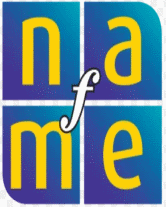A detailed introduction to the popular Mexican musical style
Introduce your students to mariachi music with this detailed overview of the history, traditions, and song forms of this popular musical style that originated in Mexico. Includes a list of books, recordings, and websites for further use and investigation.Introduction to Mariachi Music
When beginning a discussion of the mariachi, it is helpful to start with the word "mariachi" itself. Many linguists have theorized that the word comes from the French word "mariage," (meaning marriage). However, linguists now believed that the word "mariachi" may have come from one or more of the following sources: a word for a certain tree that exists in Cocula, Jalisco, Mexico; a word for a wooden dance platform made from the same tree; or a word for musical groups that the Coca Indians have always had in their language. The idea of the French origin of the word "mariachi" began during the French invasion of Mexico in the 1860s when the French observed musical groups (small string ensembles) performing at Mexican wedding ceremonies. The theory of the French origin of the word continues to be popular in many sectors, perhaps because of its romantic connotations.
Mariachi Song Forms
The music of the mariachi band is a mixture of different indigenous, as well as European and African, elements. From Europe, it borrowed many of the dance forms such as the waltz and the fandango. From Africa, it borrowed dance rhythms and melodic ideas. The forms found in mariachi music are, without a doubt, the most important element of the style. Mariachi song forms (such as the bolero, canción ranchera, son, huapango, joropo, and danzón) are always dictated by the rhythmic patterns that are performed by the guitar section of the group. This is one of the few musical genres in which text does not indicate form.The mariachi band is Mexico's only true surviving folkloric ensemble. The group itself has changed very little since the addition of the trumpets in the middle of the 1930s. The songs that the group performs have changed, but only to meet the demands of the listening public. A good mariachi band has a minimum repertory of at least one thousand songs. Top-flight groups have song lists that are two or three times as long. On top of that, a strong mariachi musician must know three or four arrangements of each of these songs. Mariachi performers are expected to know the music that is on the mind of the entire Mexican population.
Several Functions
Mariachi music is one of the few styles of indigenous music that serves both a utilitarian and an entertainment function. The mariachi band is used for many different occasions, such as dances, weddings, and funerals. It is not unusual to find the group serenading a young woman on the occasion of her birthday, celebrating a saint's day, or singing to the mother of one of the band members on her birthday. People who enjoy mariachi music like it because it rekindles old memories, takes them to places that are far away, or brings back scenes of childhood.The mariachi tradition, as it is practiced in Mexico, is one of male dominance. In the United States, women are more openly accepted as performers of this musical genre; indeed, women are an important force in the American tradition of Mexican mariachi music. If it were not for Linda Ronstadt, the contemporary vocalist who popularized mariachi music in her recordings, the genre may have have been relegated to a bottom shelf in the musical lexicon of the world.
Instruments
The following instruments can be found in a mariachi band:- Violin. When used in the mariachi band, the violin is not altered in any way from its traditional use.
- Vihuela. The vihuela is a creation of the Coca Indians of Southwestern Jalisco in Mexico. It has five strings and a bowed back, and it is slightly larger than a ukelele. It is played with a thumb pick in the rasqueado (strummed) style and is the harmonic and rhythmic foundation of the mariachi band.
- Guitar. A standard guitar is used (not altered in any way) and serves to supplement the vihuela as a rhythmic element in the mariachi band. The guitar and the vihuela play the same rhythmic patterns and keep a strong foundation for the group. Typically, a guitar is used in a mariachi band about 98 percent of the time.
- Guitarrón. The guitarrón is the bass foundation of the group and is the single most important element in the mariachi band. It serves not only as the bass of the group, but it gives the group its characteristic sound. A rule of thumb is that if there is no guitarrón, there should be no performance.
- Trumpet. A standard trumpet is used (not altered in any way). At various times, the trumpet players are asked to perform with cup mutes.
- Other instruments. There are occasions when instruments such as the flute, French horn, accordion, and organ are used. These instruments are used for specific arrangements.






